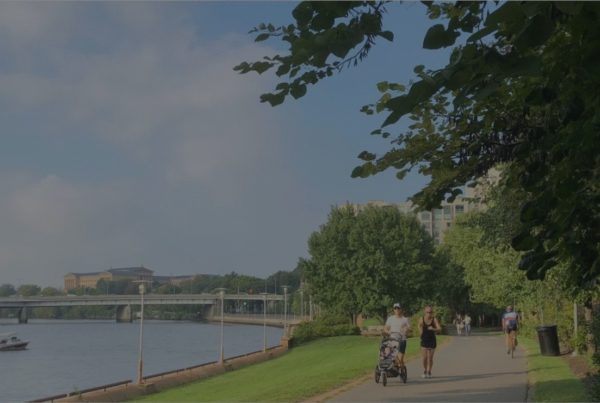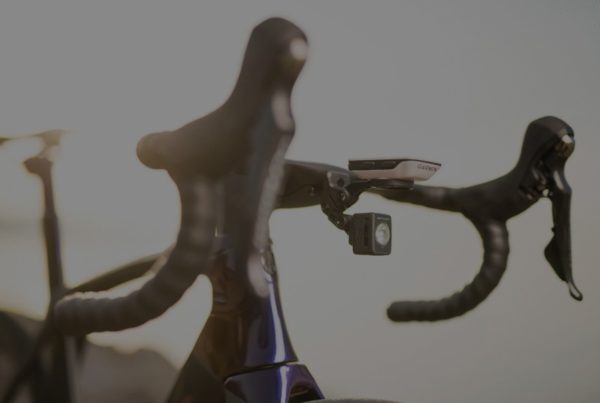Ask any motorist what irritates them most about cyclists, and you’re likely to get an earful about cyclists who behave as if stop signs and red lights don’t apply to them.
It’s a sore point in relations between motorists and cyclists, and is the single most cited contributor to the negative stereotype that cyclists are arrogant scofflaws. It’s even a sore point between those cyclists who do observe the law, and those who don’t, with the law-abiding cyclists resenting the negative stereotype of cyclists that the law-breaking cyclists generate.
Neither side is likely to change its stance; those who believe that cyclists should not hold themselves above the law continue to maintain that cyclists are scofflaws (or, alternatively, that scofflaw cyclists tarnish the reputations of all cyclists), while those who ignore the traffic signals continue to maintain that the law should not apply to cyclists, and reject any responsibility for the negative stereotypes of cyclists.
But what if the law itself was changed? What if the law recognized the reality that many cyclists do not come to a complete stop at stop signs, and legalized that behavior—would perceptions of cyclists change? Would it direct scarce law enforcement resources away from enforcement actions against safe-but-illegal behavior, and towards enforcement efforts that would improve road safety? Would it make cycling easier and safer? Or would it only serve to reward persistent bad behavior? What is the purpose of a law, anyway, and what is the effect of having a law that nobody obeys?
These are the questions raised by newly-proposed legislation in Oregon. The statute, proposed by theBicycle Transportation Alliance, would allow cyclists to treat stop signs as yield signs, requiring them to yield to traffic with the right of way, but otherwise allowing cyclists to roll through stop signs if they have the right of way.
The proposed law is being championed by longtime Portland bike lawyer and cyclist advocate Ray Thomas, and is based on a similar Idaho statute. Here’s how it works in Idaho. As in most states, in Idaho:
Every person operating a vehicle propelled by human power or riding a bicycle shall have all of the rights and all of the duties applicable to the driver of any other vehicle …except as otherwise provided in this chapter and except as to those provisions which by their nature can have no application.
Note that I have bolded the provision providing that there may be exceptions to the general rule that cyclists have all of the rights and all of the duties applicable to other vehicle operators. In Idaho, one of those exceptions is the duty regarding traffic signals. This doesn’t mean that cyclists have no duties regarding traffic signals; instead, it means that cyclists have different duties regarding traffic signals.
A cyclist approaching a stop sign must “slow down” and “if required for safety, stop before entering the intersection.” The law continues:
After slowing to a reasonable speed or stopping, the person shall yield the right-of-way to any vehicle in the intersection or approaching on another highway so closely as to constitute an immediate hazard during the time the person is moving across or within the intersection or junction of highways, except that a person after slowing to a reasonable speed and yielding the right-of-way if required, may cautiously make a turn or proceed through the intersection without stopping.
This portion of the Idaho law is sometimes referred to as “Stop as yield,” meaning that cyclists may treat stop signs as yield signs. The Idaho law also allows “red as stop,” meaning that cyclists may treat red lights as stop signs:
A person operating a bicycle or human-powered vehicle approaching a steady red traffic control light shall stop before entering the intersection and shall yield to all other traffic. Once the person has yielded, he may proceed through the steady red light with caution.
This section of the Idaho law was added at the request of law enforcement, in order to clarify that cyclists must stop at a red light. Because it allows cyclists to proceed through red when it is safe to do so, after first stopping, the Idaho law addresses the reality that cyclists often have difficulty being detected by the embedded sensor loops at intersections. Although Idaho law allows cyclists to treat “red as stop,” the law proposed for Oregon would only allow cyclist to treat stop signs as yield signs; they would still be required to stop at red lights, and to remain stopped until the light turns green.
The Idaho law is unique among the state laws; no other state has adopted this approach … yet. So how has the law worked out for Idaho? The “stop as yield” section of the Idaho law has also been in effect since 1982 (the “red as stop” section was added in 2006), giving Idaho a quarter-century of real world experience with its experiment in bicycle traffic law. Ray Thomas reports that
the Idaho experience has been positive according to Mark McNeese, Bicycle/Pedestrian coordinator for the Idaho Transportation Department… Idaho bicycle-collision statistics confirm that the Idaho law has resulted in no discernable increase in injuries or fatalities to bicyclists.
The apparent success of this statute in Idaho has led cycling activists in California, Montana, Minneapolis, and now Oregon to pursue similar legislation. Nevertheless, this is a complex issue, with some cyclists supporting the legislation, and others opposing it. That divide is even apparent here at Legally Speaking, with me enthusiastically supporting the legislation, and my law clerk on the fence, still trying to make up his mind.
Still, although I support the proposed legislation, I do stop at all stop signs. This wasn’t always the case—when I began riding competitively in the 80s, riders never stopped at intersections. That’s just the way things were. My own riding underwent an evolution when I began to think about the effect that my own disregard of stop signs was having on the public perception of cycling.
There’s no question that the public image of cyclists has suffered tremendously due to our disregard of the laws, and that tarnished public image results in unfavorable treatment of cyclists by the non-cycling public. The unfavorable treatment is apparent in the media, in law enforcement, on the road, and as many attorneys, including Ray Thomas report, in the jury box.
Will Idaho-style legislation be a way forward for cycling, a way for us to shed the negative stereotypes that lead to discriminatory treatment, by legalizing safe-but-illegal common behavior? Or will it simply make cycling safer and easier, with no effect on the public perception of cyclists? We might look to Idaho for the answer to that question. One thing seems clear, however—until stop-as-yield becomes legal, many cyclists will continue to ride in their own private Idaho, heedless of the effect that has on cycling.
This issue is more complex than has been adequately covered anywhere, including within the space of this one column. For that reason, I invite Legally Speaking readers to visit my blog at bicyclelaw.com, where I will be offering, in a multiple-part series, a more in-depth review of the issues raised by “stop-as-yield.” I will also be discussing this issue on the radio on Monday morning, January 26th, at 7 A.M.; I invite all of you to listen in at KPOJ, AM 620 in Portland.
Bob
(Research and drafting provided by Rick Bernardi, J.D.)
This article, Stop as yield, originally published Jan 22, 2009 on VeloNews.
As I noted last week, I’ve been working on updating my website lately, and it’s finally online, with an all-new look, and all-new content. You can check out the changes to my website atbicyclelaw.com, including a new blog which will be updated with new content regularly. There’s another exciting change to my website—Velologue, my new blog about bicycle culture in all its aspects, is now online. You can link to it from bicyclelaw.com, or you can access it directly atwww.velologue.com. I hope you will visit both sites regularly.



